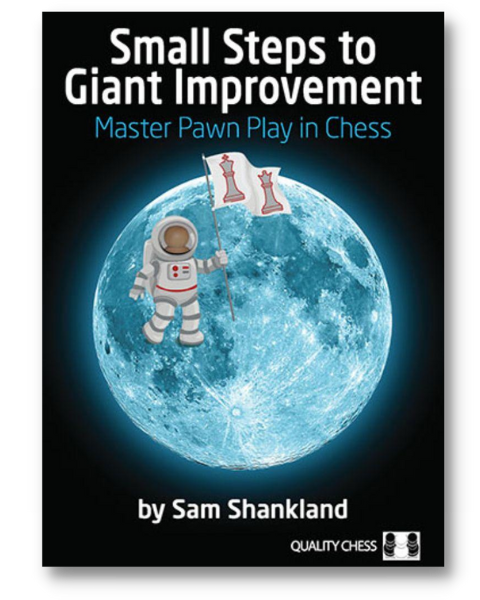Book Review of Small Steps 2 Success
“The passed pawn is a criminal, which belongs under lock and key.”
– Aron Nimzowitsch in “My System” (Quality Chess edition, 2007)
It’s hard to argue against success. GM Sam Shankland’s first book “Small Steps to Giant Improvement” was a best seller. Moreover, as Shankland writes in the preface of this new book:
“The year-and-a-half between finishing Small Steps to Giant Improvement and writing Small Steps 2 Success was the most eventful of my career. I won the US Championship, the Capablanca Memorial, and the American Continental back to back, and finally smashed through the 2700 barrier after having been stuck in the mid-to-high 2600s for a few years.”

Shankland also considered some of the issues raised about the first book when writing the new book:
“Despite the overwhelmingly positive feedback, I took some constructive criticism to heart and made some minor changes in the second volume. There is a little less text and significantly more (and sometimes harder) exercises. The chapters are a little longer and more detailed, but there are only fourteen of them instead of sixteen. I have largely refrained from reciprocal guidelines when dealing with the same topic from the other side of the board. The book reads a little less like a manual – but overall, the structure remains the same.”
The new book deals with the topic of passed pawns, as can be seen from the table of contents, and it studies their role in the middlegame and endgame. The witty chapter titles allude to the topics covered. For example, “Single and Happy” discusses positions with just one passed pawn. The topics are treated from the point of view of both the attacking and defending sides. For example, “Single and Happy” deals with exploiting the passed pawn, while the next chapter, “Single on Valentine’s Day”, deals with defending against the passed pawn. Each chapter also includes exercises for the reader to solve, and these are accompanied by detailed solutions.
Shankland writes in an engaging style that clearly helps learning. The examples are well-chosen, and the annotations provide plenty of verbal commentary to complement the variations. He doesn’t go overboard on the analytical variations, and this makes the book accessible for lower-rated players, as well as for stronger players. Each chapter provides guidelines that summarise the key aspects to consider for the given topic. For example, the first guideline in “Single and Happy” is:
“If you want to queen a lone passed pawn, your pieces need to be ready to fight for every square that your opponent can potentially blockade.”
These guidelines are an excellent way to remember the key aspects, and they will help the reader to make correct decisions in their own games when dealing with similar positions.
Two examples from the book are given below, with annotations from the book.
In summary, “Small Steps 2 Success” is a worthy sequel to Shankland’s first book, and it deserves to achieve the same success as the first book.
Have any thoughts or questions? Let us know in the comments!
For a limited time, get Small Steps 2 Success with a special 10% discount offer at forwardchess.com.
- New Release: Chess Analysis – Reloaded - March 9, 2024
- Review: The Art of The Endgame – Revised Edition - February 14, 2024
- Review: Study Chess with Matthew Sadler - December 13, 2023


